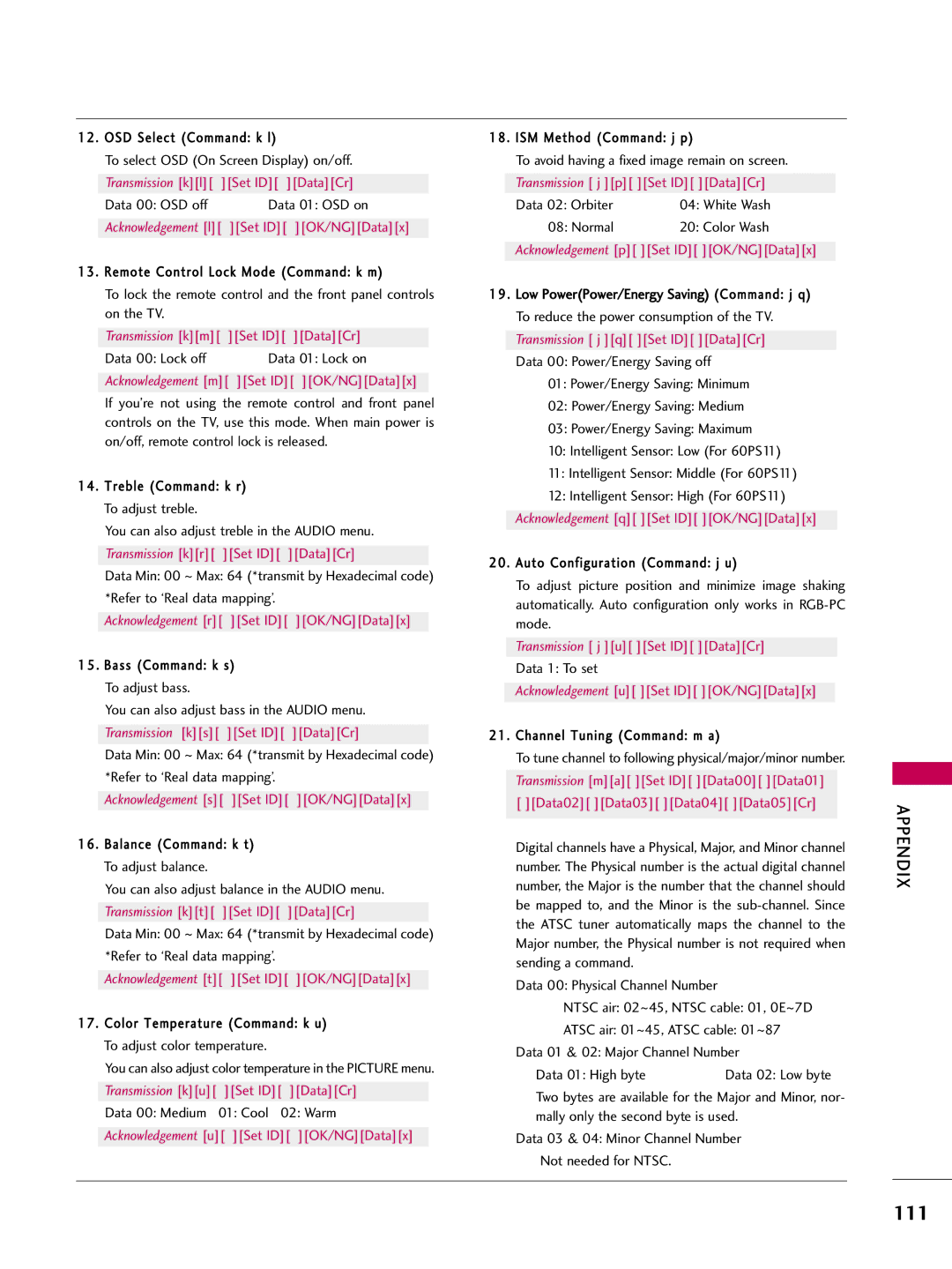42PQ12, 50PQ12 specifications
The LG Electronics 42PQ12 and 50PQ12 models represent a significant advancement in plasma display technology, specifically designed for home entertainment and commercial use. Known for their vivid picture quality and robust build, these models are ideal for viewers seeking immersive audio-visual experiences.One of the standout features of both the 42PQ12 and the 50PQ12 is their impressive display resolution. With a native resolution of 1366 x 768 pixels, these plasma screens offer sharp and detailed images, making them suitable for watching everything from HD movies to high-action sports. The screen sizes vary, with the 42-inch model being perfect for small to medium rooms, while the larger 50-inch model is designed to create a cinema-like experience in larger spaces.
The technology behind these models includes LG's unique Plasma Display Panel (PDP), which utilizes thousands of tiny gas cells to produce bright, vibrant colors. This results in deeper blacks and more accurate color reproduction compared to traditional LCD screens. Viewers will appreciate the enhanced contrast ratios and wider viewing angles, enabling a more enjoyable viewing experience from different positions in the room.
Another key characteristic of the 42PQ12 and 50PQ12 is their fast response time. Plasma displays are known for reducing motion blur, making them particularly effective for fast-paced action scenes or sports programming. Additionally, these models can achieve impressive brightness levels, ensuring that the images remain clear and vibrant even in well-lit environments.
In terms of connectivity, both models feature multiple HDMI ports, allowing users to easily connect various devices such as Blu-ray players, gaming consoles, and sound systems. The built-in audio system offers decent sound quality, with the option to enhance the experience through external speakers or sound systems.
Energy efficiency is another important aspect of the design, as both models incorporate technology aimed at reducing power consumption while delivering high-quality performance.
Overall, the LG Electronics 42PQ12 and 50PQ12 models are excellent choices for anyone looking for versatile and high-performing plasma displays. With their combination of advanced technologies and user-friendly features, they stand as a testament to LG's commitment to delivering quality home entertainment solutions.

